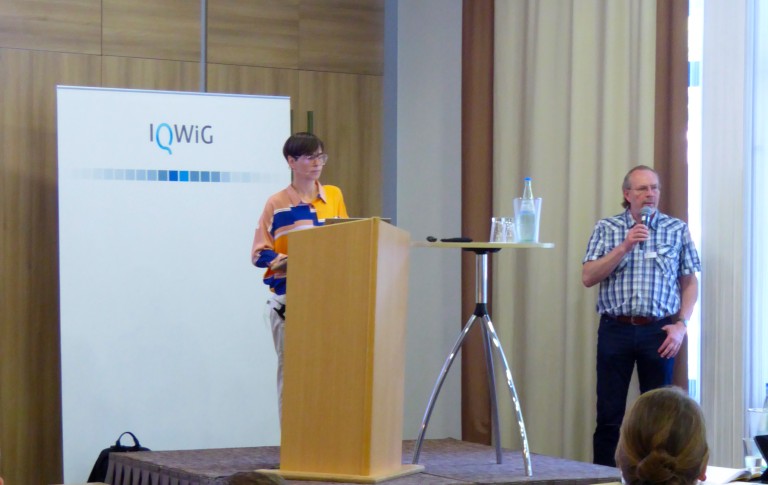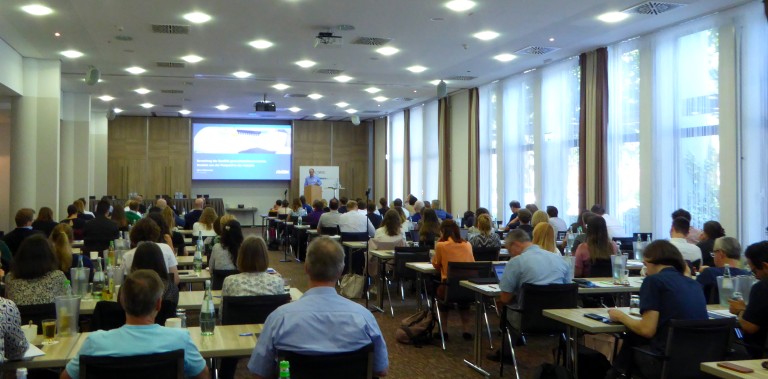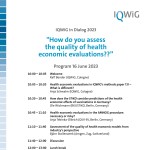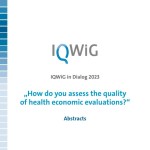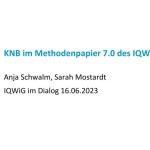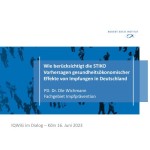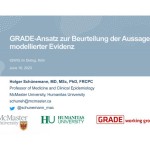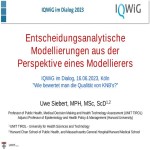2023: How can health economic evaluations be assessed?
The quality and possible uses of health economic evaluations
Health economic evaluations (HEEs) relate the health benefits of medical interventions to their costs. HEEs are usually based on decision-analytic modelling. They are designed, for example, to allow for a longer time horizon than the clinical trials on which the benefit assessments are based, while accepting a higher degree of uncertainty. In the context of the procedure according to the Act of the Reorganization of the Pharmaceutical Market (AMNOG) in Germany, HEEs can be used, for example, to inform the pricing of new drugs if the early benefit assessment of a new drug has been completed and price negotiations between the National Association of the Statutory Health Insurance (SHI) Funds and the pharmaceutical company have failed.
At the "IQWiG in dialogue" event on 16 June 2023 in Cologne, together with more than 120 experts from universities, other research institutions, industry and HTA agencies, the Institute for Quality and Efficiency in Health Care (IQWiG) discussed which criteria are important for assessing the informative value of such health economic models and how cost-effectiveness models could play a greater role in Germany.
At the beginning of the discussion, Anja Schwalm, Head of Health Economics at IQWiG noted: "Since the start of the AMNOG procedure in 2011, neither the SHI funds nor industry have initiated an HEE. Therefore, the Federal Joint Committee (G-BA) has not yet commissioned IQWiG to carry out an HEE according to §35b of the German Social Code Book (SGB) V. This could also be due to the fact that the procedure is very complex and drags on for several years; not an attractive option with patent periods of 10 years. The Institute has therefore revised its HEE methods. Our new approach is more pragmatic. For example, the previous methods required all treatment options in the therapeutic indication to be considered; now fewer comparators can be used. In addition, IQWiG no longer derives a price recommendation. Instead, the incremental cost-benefit ratio, i.e. the cost-benefit ratio calculated step-by-step in relation to the comparator therapy, is reported.”
Anja Tebinka-Olbrich, Head of the AMNOG Reimbursement Negotiations Unit at the National Association of the SHI Funds emphasized: "The introduction of new, high-priced treatment options increases the need for early, methodologically uniform and comparable HEEs as a supplemental component of rational and fact-based pricing. Pharmaceutical companies are already occasionally introducing cost-benefit aspects into the AMNOG procedure: The companies then select individual aspects from the data sources available to them to support their position. However, this methodological approach is dubious and cannot be verified in the negotiations. The pragmatic HEE methods now presented by IQWiG, which focus on the important questions, could remedy this situation - as a supplement to the early benefit assessment within the AMNOG procedure and possibly as part of a new task for IQWiG.
Björn Stollenwerk, Director of Health Economics at Amgen (Europe) GmbH noted: “There are always knowledge gaps in health economic models that need to be filled with plausible assumptions; in this context, surrogate parameters, mathematical assumptions and expert opinions play an important role.” His conclusion: "There is a risk that health economic models will systematically underestimate the value of innovative medicines and that patients will be denied access to innovations".
Ole Wichmann, Head of Infectious Disease Epidemiology at the Robert Koch Institute (RKI) stated: “The RKI has been using HEEs since 2016 to obtain additional evidence for developing vaccination recommendations. Of course, our recommendations are primarily based on an epidemiological and medical risk-benefit assessment. To ensure that a vaccination strategy is not only effective but also as efficient as possible, the RKI also carries out HEEs.” As examples, Wichmann mentioned the modelling that was carried out to determine the age for herpes zoster vaccination and also in the run-up to the recommendation for the human papilloma virus (HPV) vaccination in boys. Using HPV vaccination as an example, the RKI expert explained why the HEE of vaccines is particularly challenging: "Any cost savings for the health care funds will only become apparent after 30 or 40 years. Herd effects or a partial decline in vaccine protection over time can hardly be modelled reliably.”
Uwe Siebert, Head of the Institute for Public Health, Medical Decision-Making and Health Technology Assessment (HTA) at the Private University of Health Sciences and Technology in Hall in Tyrol, Austria, explained in detail how he and his team create decision-analytic models to evaluate health technologies: "Of course, the key principles of HTA have to be taken into account. The domains to be evaluated include benefits, harms, costs, as well as ethical, social, patient-related and legal aspects. Evidence on these domains comes from randomized controlled clinical trials, observational studies, cost catalogues, descriptive databases and other sources. To inform decisions, it is critical to bring these evidence components together systematically and transparently over a time horizon that is long enough to capture the relevant events and health states." According to Siebert, four domains in particular play a role in assessing cost-effectiveness: The trade-off between benefits and harms can either be represented by incremental harm-benefit ratios or integrated using utility values (e.g., quality-adjusted life years, QALYs). The trade-off between added benefits and extra costs (efficiency) can be represented by incremental cost-effectiveness ratios. More recent models also emphasize the quantitative and explicit trade-off between efficiency and (in)equality (net benefit distribution).
Grading of Recommendations, Assessment, Development and Evaluation (GRADE) is an internationally recognized approach for grading the quality of evidence and the strength of recommendations in clinical practice guidelines (CPGs). Holger Schünemann, Director of the GRADE Centre at McMaster University, Hamilton, Canada, presented GRADE's conceptual approach to assessing the trustworthiness of conclusions from modelling studies. GRADE proposes the following hierarchical approach: The first preference is to develop a model de novo that is specific to the situation of interest; secondly, if this is not possible, to switch to an existing model whose results provide the highest level of confidence for the situation of interest (either "off the shelf" or after adaptation); and thirdly, to synthesize the results of different models in an appropriate way. However, even when this approach is implemented in the best possible way, modelled evidence is often of very low certainty. The resulting recommendations should then be used with great caution.
In his concluding statement, Thomas Kaiser, Director of IQWiG, pointed out: "Modelling can therefore only be used for decisions in the health care system if the model is of very high quality and therefore sufficiently reliable. The aim must be to achieve the best possible quality of such models, even if this does not come for free. The community of SHI fund members has a right to this.”


